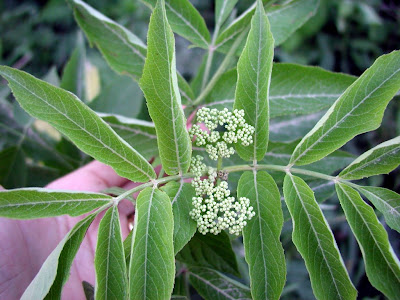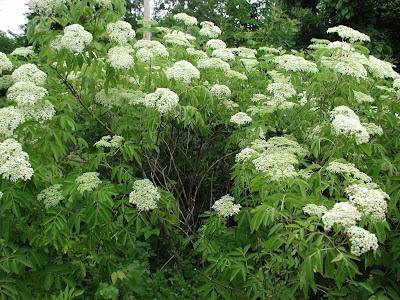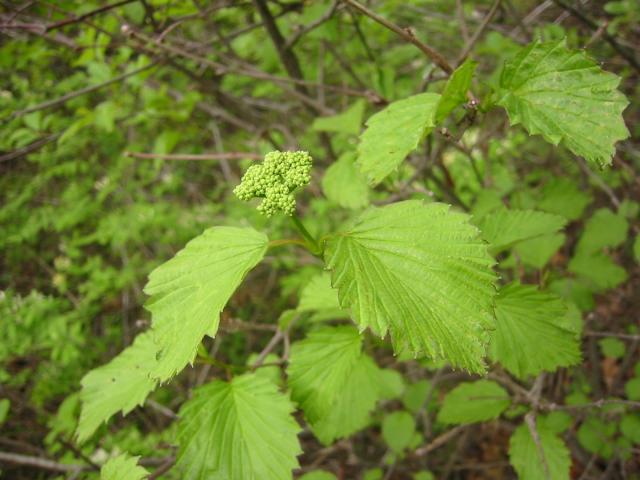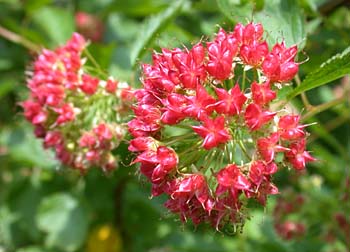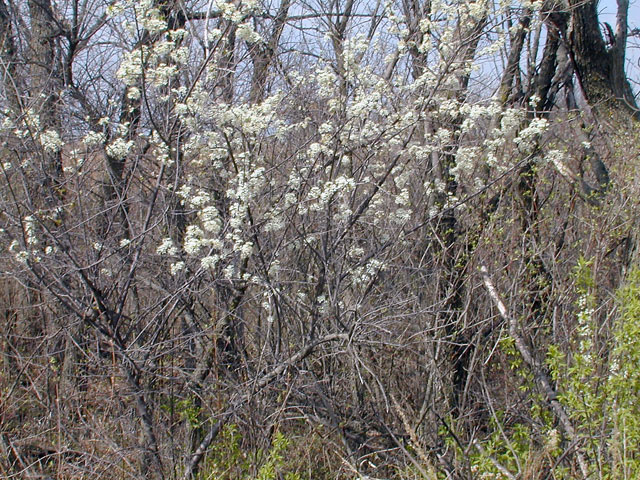dbltree
Super Moderator
Quick Guide
1) Prepare for tree plantings by spraying the fall before either a 3' wide band or circle killing sod with 1-2 quarts of glyphosate, 1 ounce of Oust XP/SFM 75 and 1 quart of crop oil in September or October. (do not use Oust on fruit trees or Highbush Cranberry)
Source for generic Oust as well as every imaginable type of herbicide!!
SFM 75 herbicide
2) order trees early from nurseries listed below (many sell out by November!!)
3) plant trees as early as possible in spring (early to mid April in lower midwest) Plant immediately upon arrival or heel in trees until you can plant (dig a trench deep enough to lay seedling roots in and cover and water)
4) Spray either just before or after planting with 2 quarts simazine (Princep) and 2 quarts pendimethalin (Prowl 3EC, Pendulum 3.3 EC) per acre, if grass is present and trees not yet planted add 1 quart glyphosate, if trees are planted add 12 ounces clethodim and one quart crop oil and leave out the gly. Use that combination in a 3-5 al BP sprayer or per 5 gal on water in an ATV/UTV type sprayer. Simazine and Prowl can be ordered from your local ag co-op but Keystone carries them as well.
5) Oaks, chestnuts, walnuts etc are best tubed to encourage growth and protect against damage from deer and other wildlife. Shrubs may be tubed or fenced. The following is a source that at this time has the best tubes for the least cost that I am aware of. I have tested many brands of tubes but many fail miserably but Miracle tubes have performed very well!
Mike Hamilton, Owner
Timber Management and Seed Co., LLC
385 North Haven Drive, Robins, IA 52328
e-mail: timbermgmt@yahoo.com
cell phone (319) 573 - 0615
"Specializing in tree and shrub seed for small and large projects. Supplying hunters, landowners, foresters, contractors, nurserymen, and farmers. Also a supplier of TreePro/MiracleGro ventilated tree shelters, stakes and other forestry products."
5' vented tree shelters (1 to 49)= $4.00
5' vented tree shelters ( 50 to 99 )= $3.00
5' vented tree shelters ( 100 + ) = $2.60
5' Bamboo stakes (1 to 99) = $1.50
5' Bamboo stakes (100+) = $1.15
6' Bamboo stakes (1 to 99 ) =$2.00
6' Bamboo stakes ( 100 + ) = $1.40
We can ship 50, 5' shelters and 50, 5' stakes for to ND, SD, NE, MN, WI, IA and IL for about $20.00 or less .
We can ship 50, 5' shelters to these same states for close to $10.00 to $15.00.
---- **BARK PROTECTORS NOW AVAILABLE TOO**
6) pack dirt around the bottom of tubes to keep mice out and moisture in,10' lengths of 1/2 conduit cut into 5' length's is an inexpensive source of stakes (.75c to $1 a piece)
7) Control weeds for 3-10 years to encourage faster growth and to keep mice and rabbits away from tubes/trees
It's getting that time of year, to order seedlings and prepare for tree planting. These photos were taken 6-8 years ago.
The single best thing I ever did was plant Autumn Olives several rows thick around my property line. Now they are considered an invasive plant, however they have not spread on my place. They grow extremely fast, provide a great cover and a dense screen. You can see (barely) High Bush Cranberry to the left next to the lane and they are barely a few feet high and planted the same time as the Olives! These Autumn Olives were 3 years old when the picture was taken.
Planting trees with a County Conservation Board planterPlease note that my Autumn Olives were planted nearly 13 years ago, well before they were considered invasive.
They work well for me and I have thousands so they are there to stay, however I am in no way advocating planting them now.
There are many native, non-invasive alternatives to choose from.

Sod killed with Roundup in September to prepare for spring planting of trees on CRP ground.

Tree planting using Oust and Princep herbicides to control weeds.

If your thinking about planting trees and shrubs for wildlife food, cover or a "poacher screen" check out:
Iowa Tree Planting
Coldstream Farm
Oikos Tree Crops
Windbreak Trees/Kelly Tree Farm
MDC- Nursery
Idaho University Nursery
Red Fern Farm Nursery
Windbreak Trees/Kelly Tree Farm
Lincoln Oakes Nursery
The Wildlife Group
Reeseville Ridge Nursery
Edward Fort Nurseries
Rhora's Nut Farm and Nursery
PA Game Comission - Howard Nursery
St. Lawrence Nursery
North Central Reforestation
Lawyer Nursery
Native Nurseries
Big Rock Trees
Woody Warehouse
Advantage Forestry
Porky Farm Nursery
Nuserymen
Lot's of great information and ideas to create better habitat and protect those big bucks!
Planting information:
Iowa State Forest Nursery Seedling Catalog
How to plant a tree
Forestry links
Tree planting objectives and the seedling selection process
Tree seedling availability, planting, and initial care
Early protection and care for planted seedlings
Tree Planting
Tree Planting - Establishment and care
North Dakota Tree Handbook
Here is a list of potential trees one might consider in a hardwood tree planting.
Tree Identification key
Black OakBlack Oak - Quercus velutina
This is a large tree, sometimes growing more than 100 feet in height.The thick, nearly black bark is marked with deep furrows and irregularly broken ridges. The characteristic inner bark is bright yellow to orange, hence the alternate common name. This tree grows on dry uplands, slopes and ridges.
The wood, while hard and strong is not tough, checks while drying and generally is inferior to that of the Red Oak. Still, it is used in much the same ways. Historically, the inner bark was important for its tannin and as a source of yellow dye. The bitter acorn is inedible.
Tree Size height 60' - 80' diameter 2' - 3'
Black Oak- Quercus velutina




Northern red oak (Quercus rubra)Red Oak - Quercus rubra
The bark darkens and roughens near the base of older trees, while becoming fissured with broad, grayish ridges on the upper trunk. The tree grows on rich, well-drained soils.
The wood is similar to that of the White Oak, and although more porous and less resistant to decay, is used extensively used in construction and interior work.
The Red Oak grows more rapidly than most oaks and is useful for planting in residential areas. The acorns are not as tasty as those of the White Oak, but many kinds of wildlife feed on them
Red Oaks




Pin Oak (Quercus palustris)Pin Oak - Quercus palustris
The mature tree is distinctive from a distance with its ascending upper branches, horizontal middle branches, and drooping lower branches. The round acorns are the smallest of Ohio's oak trees. The Pin Oak grows in wet, often poorly drained soils of bottomlands and swamps. The strong, close-grained woods warps and checks badly in drying and has limited uses. Various wildlife, including Wood Ducks, feed on the acorns.
Pin Oaks




chinkapin oakChinquapin Oak - Quercus muehlenbergii
The light gray or silvery-white bark of this tree resembles that of the White Oak. The tree grows well on the rich soils of bottomlands, but it also is found on drier hillsides.
The strong, durable wood is used for railroad ties, fuel and construction lumber. Its inclination to check badly during drying, however, makes it of little value for cabinetry and better furniture.
Reportedly the acorns are "sweeter" than those of any other oak.
Chinquapin Oak (Quercus muehlenbergii)




Dwarf Chinkapin Oak can produce acorns in 3-4 years which makes it very a very attractive oak to consider planting! They are also perhaps the sweetest acorns to be found...
Dwarf Chinkapin Oak seedling sources:Quercus prinoides Willd.
Dwarf chinkapin oak
Fagaceae (Beech Family)
USDA Symbol: QUPR
USDA Native Status: Native to U.S.
GROWTH FORM: rhizomatous shrub or a small tree to 25 feet (7.6 m). BARK: thin gray bark with furrows and scaly ridges. TWIGS and BUDS: grayish twigs, broadly rounded bud brown to chestnut-brown with a blunt apex, scales have some pubescence. LEAVES: shortpetiole 1/4 - 5/8 inch (6 - 16 mm); leathery leaves are obovate, 1 1/2 - 5 1/2 inches (38 - 140 mm), 3/4 - 2 1/2 inches (19 - 63 mm), margin undulate or toothed with 3 - 8 pair of short rounded teeth, base cuneate, apex rounded; shiny dark green above, light green below with slight pubescence. ACORNS: annual; 1 - 2 acorns on peduncle up to 3/8 inch (10 mm), thin cup with short gray pubescent scales, covering up to 1/3 of nut; oblong to oval light brown nut, up to 3/4 inch (19 mm) long.
Dwarf Chinkapin oak can produce acorns at 3 - 5 years. The largest known dwarf chinkapin oak is growing in Richardson County, Nebraska.
Dwarf Chinkapin Oak — Quercus prinoides Seedling Source
Dwarf Chestnut Oak (Quercus prinoides) does say this...
ALLEGHENY CHINKAPINQuercus prinoides usually doesn't grow more than 20 feet tall, and it begins producing acorns at a young age, often when only three or four years old.
Unlike many oaks, once it starts bearing, it has a good crop almost every year. Its acorns are also less bitter and more palatable to wildlife than those of most other oaks.
MDC White Oak list
Dwarf Chinkapin Oak (Quercus prinoides) leavesChinkapin oak is closely related to the smaller but generally similar dwarf chinkapin oak (Quercus prinoides). Besides the differences in size, the two species can be distinguished by their typical habitat: chinkapin oak is typically found on calcareous soils and rocky slopes while dwarf chinkapin oak is more likely to be found on sandy soils.
Although these two oaks are generally regarded as separate species, they are sometimes considered to belong to the same species. Interestingly, when the two are considered to be conspecific, the larger chinkapin oak is often identified as a variety of dwarf chinkapin oak (as Quercus prinoides var. acuminata) because the later was described first.
Chinkapin oak is also sometimes confused with the related chestnut oak. However, unlike the pointed teeth on the leaves of the chinkapin oak, the chestnut oak generally has rounded teeth. Unfortunately, this distinction is often not readily apparent. A more reliable means of distinguishing the two is by the bark. Chinkapin oak has a gray, flaky bark very similar to white oak but with a more yellow-brown cast to it, hence the occasional name yellow oak. Chestnut oak has dark, solid, deeply ridged bark that is very different. The chinkapin oak also has smaller acorns than the chestnut or swamp chestnut oaks, which have some of the largest.

From this site: dwarf chinkapin oak






Oikos Tree Crops - Dwarf Chinkapin Oak
Morse Nursery - Dwarf Chinkapin Source
LINCOLN-OAKES NURSERIES
Current Nebraska Champion Tree - Oak, Dwarf ChinkapinPrairie Pioneer™ Dwarf Chinkapin Oak - Quercus prinoides ‘Fort Lincoln’
Dwarf Chinkapin Oak grows typically as a multi-stemmed, suckering, large shrub or small tree, 6 - 16 feet in height. It is native in the eastern U.S. as far west as southeastern Minnesota, eastern Nebraska and Texas.
Prairie Pioneer™ is a seedling selection grown from seed collected from a native stand in southeast Nebraska by Greg Morgenson, manager of Lincoln-Oakes Nurseries, Bismarck, ND. This novel, small-statured, tree-like cultivar is collaboratively released by NDSU and may reach 24-28 feet in height at maturity.
It has withstood -35 to -40◦F numerous times in Bismarck, ND, and therefore is hardy in zone 4, and potentially zone 3b as well. Prairie Pioneer™ was selected for its dark green, very lustrous foliage and upright growth habit easily trained to a single stem. The leaves vary from 2 - 4 ½ inches long, ovate-oblong to obovate, acute tipped and wedge-shaped at base, with 4 - 6 shallow undulate to dentate teeth on each side.
The lustrous foliage is somewhat reminiscent of the leaf quality on broadleaf evergreen holly species. The underside of the leaves is finely tomentose and lighter colored. In spring, trees are covered with yellow male catkins before leaves emerge, and sessile acorns are produced if a suitable white oak member species is in the area for pollination. Fall color is typically yellow to tannish-brown.
Propagation is by side grafting on containerized seedlings of chinkapin oak (Q. muehlenbergii), swamp white oak (Q. bicolor) or preferably, bur oak, if proven to be compatible. Prairie Pioneer™ merits attention as a dense, quality-foliaged small tree for residential landscapes and various sites where large trees are unsuitable.
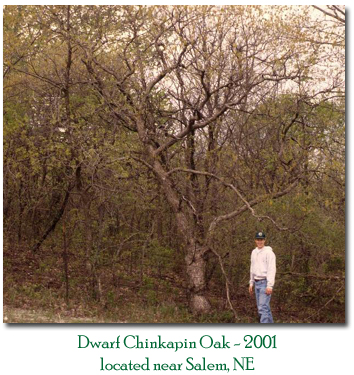
Oak ID Key
True Nature Farm - Dwarf Chinkapin Oak seedlings
RPM Southern Hardwoods
The following pics are of Chinkapin oak Quercus muehlenbergii Engelm. (not dwarf)...pretty tough to tell which is which.
Chinkapin oak
swamp white oak Fagaceae Quercus bicolorSwamp white oak - Quercus bicolor is a deciduous tree with a broad, rounded crown. The dark, shiny green leaves are silver on the bottom side. Fall color is usually yellow, but sometimes reddish purple.
Though ornamentally insignificant, flowers bloom in April attracting pollen-seeking insects that attract migrating vireos, tanagers and warblers in search of a meal. Large acorns mature in early fall providing food for deer, wild turkey, black bear, fox and gray squirrels.
Indigenous to moist, bottomland locations, this oak has surprisingly good drought resistance.
Swamp White Oak



White Oak (Quercus alba)White Oak (Quercus alba)
A dominant forest tree on dry to moist sites throughout the Commonwealth usually reaching 80'-100' high. This tree is very important to both wildlife and people.
The acorn is an important wildlife food and eastern Native Americans made a flour from these acorns. Traditional uses of White oak wood include hardwood flooring, whiskey barrels and boat building. The famous Revolutionary War frigate, USS Constitution, "Old Ironsides", was made of White oak.
The "white oak group" includes all oaks without bristle-tipped lobes and acorns that ripen in one season
white oak Fagaceae Quercus alba L.




Sawtooth Oak (Quercus acutissima)Sawtooth Oak (Quercus acutissima) is in the red oak family. Native to Asia, it is noted for its fast growth (two feet per year) and early acorn production.
The first acorns are routinely produced in five to 10 years versus the 25 or 30 years it usually takes native oaks to start producing acorns.
The acorns are large and dropped in September or early October. The sawtooth is also noted for its consistent annual production and not being as subject to frosts or poor crops which often limit white oak production.
Although the red oak group has a reputation for being less palatable (containing more tannic acid) than the white oak group, the sawtooth does not.
Sawtooths will reach 50 to 70 feet in height. They are sometimes used as an ornamental shade tree, but retain the dead leaves on the limb well into winter.
Sawtooth leaves are similar to American chestnut leaves but are smaller, four to eight inches long, and have more sharply pointed teeth. Yields from mature trees in good years range from 1,000 to 1,300 pounds of acorns per tree.
sawtooth oak Fagaceae Quercus acutissima Carruthers





A Concordia Oak is a 3-way cross between a swamp white oak, chinkapin oak and dwarf chinkapin oak.
There is some confusion between another "concordia oak" as mentioned here...In 1974 botanist Paul Thompson noticed an unusual oak at an I-70 rest stop near Concordia. His discovery revealed a botanically rare, three-way hybrid that occurs only in Lafayette County. At the time, few specimens remained. Concordians hurried to get the rare acorns to the state nursery. Thanks to Friends of the Concordia Oak and the George O. White State Nursery, the oak’s future is secure. To learn more about seedling availability, call Concordia Parks and Recreation at 660-463-4277.
The name “Concordia oak,” used for the threeway hybrid from Lafayette County, already designates a small cultivar of the English oak (Q. robur ‘Concordia’, known for its bright yellow spring leaves). Surely taxonomists will want to avoid confusion here. Could you tell us what botanical epithet, if any, has been settled for the Missouri tree, and identify its three parents?
David Dunlap, West Plains
Editors’ note: You’re right—Concordia oak is also a common name for the English oak cultivar you mentioned below. Our Concordia is Quercus X introgressa (named by botanist P.M. Thompson).



Tree tubes
Plantra Tree Tubes

Tubex Tree Shelters

BlueX shelters

TreePro tree shelters

Tree Shelter Tests
Cost Share Options
I'll try to put some of these in the appropriate threads but here are just a few cost share options to consider for various forest improvement practices. Be certain to read the EQIP practice link carefully and note that simple wording can double a payment per acre!!
Iowa only....REAP Practices must be approved by IDNR Forester and paid once inspected by the IDNR Forester and bill submitted.
TSI - Timber Stand Improvement 5 acre minimum - allowed $160 an acre X 75% =$120
Tree Planting - 3 acre minimum $600 allowed per acre X 75% = $450
Tree Planting/Weed Tree Removal - $160/$600 x 75% (weed tree removal may be less acres then total planted)
Federal Programs...these two have identical practices but EQIP practices allowed are different by county/state while WHIP is nationwide.
Environmental Quality Incentives Program (EQIP)
Wildlife Habitat Incentive Program (WHIP)
Check by State
The following is just a brief list of a few of the options available...check this link for the complete list and the payment rates.
2011 Iowa EQIP Practices and Payments
314 Brush Management (weed tree removal)
647 Early Successional Habitat Development/Management (Timber Edge Feathering)
490 Forest Site Preparation
666 Forest Stand Improvement (TSI or Weed Tree removal)
422 Hedgerow Planting
338 Prescribed Burning
391 Riparian Forest Buffer
612 Tree and Shrub Establishment
380 Windbreak or Shelterbelt Establishment
In all cases either the forester or NRCS Tech will need to inspect the finished practice before the operator/landowner can be paid. Usually a simple bill will suffice (10 acres TSI X $160 for example) but in some cases they will want an itemized (seedlings, herbicides, fuel, labor etc) that add up to the total cost share.
The federal programs are not cost share, just a payment per acre so slightly different then the state programs.
Talk with NRCS and your local forester/private land biologist for more details but even they get confused, so look over the links and be informed yourself!
<!-- / message --><!-- sig -->
Last edited:

















